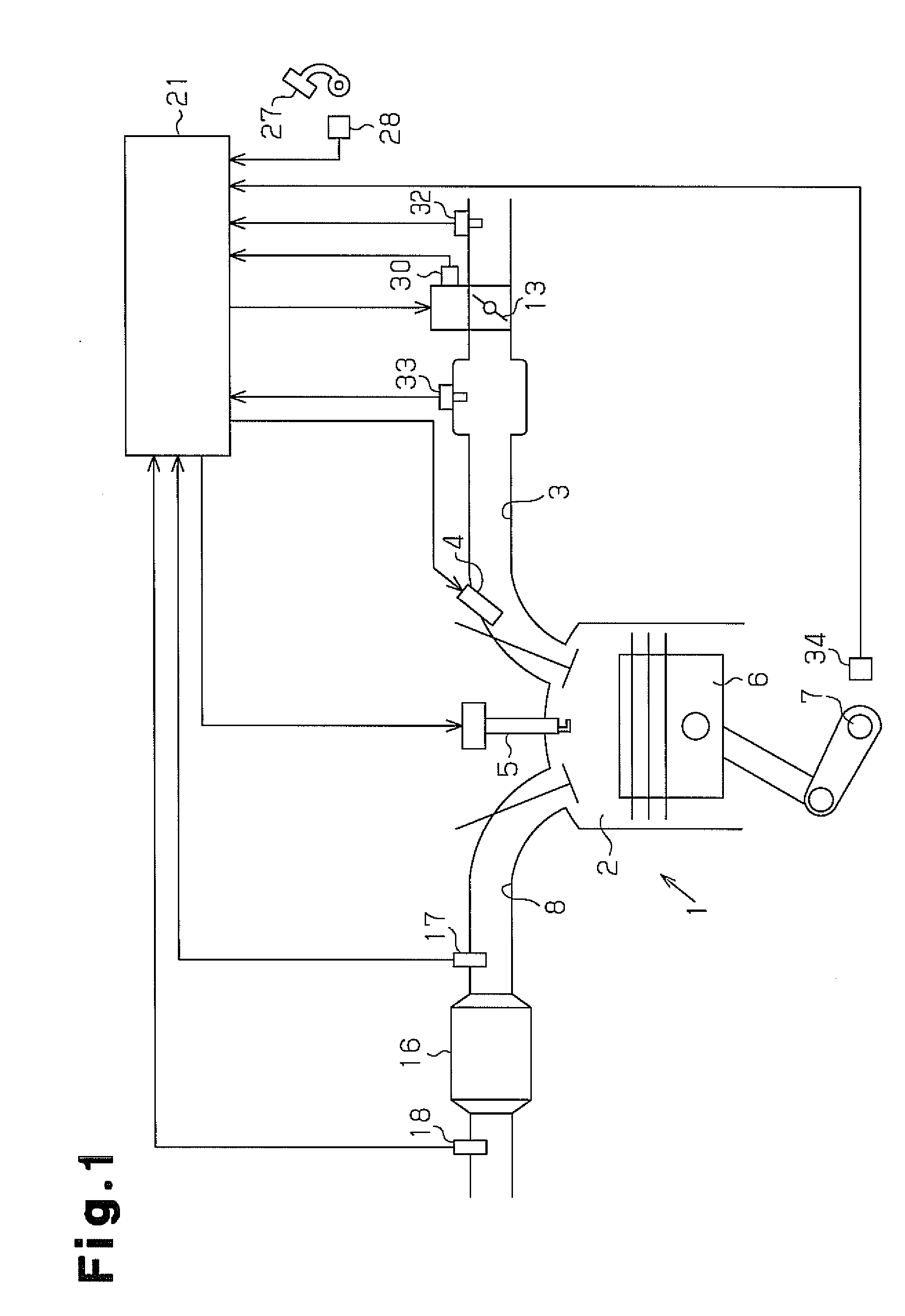Catalyst degradation detection device
a detection device and catalyst technology, applied in mechanical equipment, machines/engines, electric control, etc., can solve the problems of increasing the risk of fluctuation center and the decline of the oxygen storage function of catalysts
- Summary
- Abstract
- Description
- Claims
- Application Information
AI Technical Summary
Benefits of technology
Problems solved by technology
Method used
Image
Examples
Embodiment Construction
[0029]Hereinafter, an automobile engine according to one embodiment of the invention will be described referring to FIGS. 1 to 7.
[0030]An engine 1 illustrated in FIG. 1 has a throttle valve 13 adapted to open and close in an air intake passage 3 connected to a combustion chamber 2. Air is drawn into the combustion chamber 2 through the air intake passage 3, and fuel injected from a fuel injection valve 4 is supplied to the combustion chamber 2 through the air intake passage 3. Air fuel mixture of gas and fuel supplied to the combustion chamber 2 is ignited by an ignition plug 5 to be combusted. When the air fuel mixture is thus combusted in the combustion chamber 2, a piston 6 reciprocates and a crankshaft 7, which is an output shaft of the engine 1, is rotated.
[0031]The air fuel mixture after being combusted in the combustion chamber 2 is discharged from the combustion chamber 2 as exhaust gas and flows into an exhaust passage 8. The exhaust gas passing through the exhaust passage ...
PUM
 Login to View More
Login to View More Abstract
Description
Claims
Application Information
 Login to View More
Login to View More - R&D
- Intellectual Property
- Life Sciences
- Materials
- Tech Scout
- Unparalleled Data Quality
- Higher Quality Content
- 60% Fewer Hallucinations
Browse by: Latest US Patents, China's latest patents, Technical Efficacy Thesaurus, Application Domain, Technology Topic, Popular Technical Reports.
© 2025 PatSnap. All rights reserved.Legal|Privacy policy|Modern Slavery Act Transparency Statement|Sitemap|About US| Contact US: help@patsnap.com



